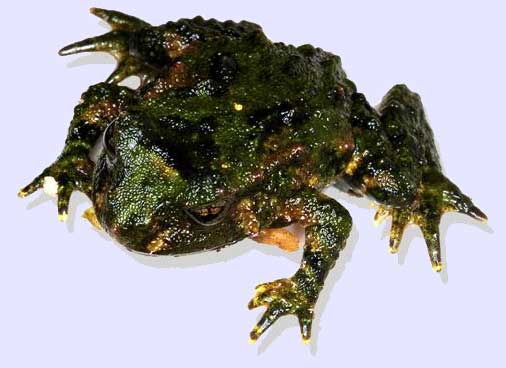Cladus: Eukaryota
Leiopelma hochstetteri
Name Leiopelma Fitzinger, 1861 Type species: Leiopelma hochstetteri Fitzinger, 1861 References * Fitzinger, 1861, Verh. Zool. Bot. Ges. Wien, 11: 218. Vernacular names Source: Wikispecies: All text is available under the terms of the GNU Free Documentation License |
|

